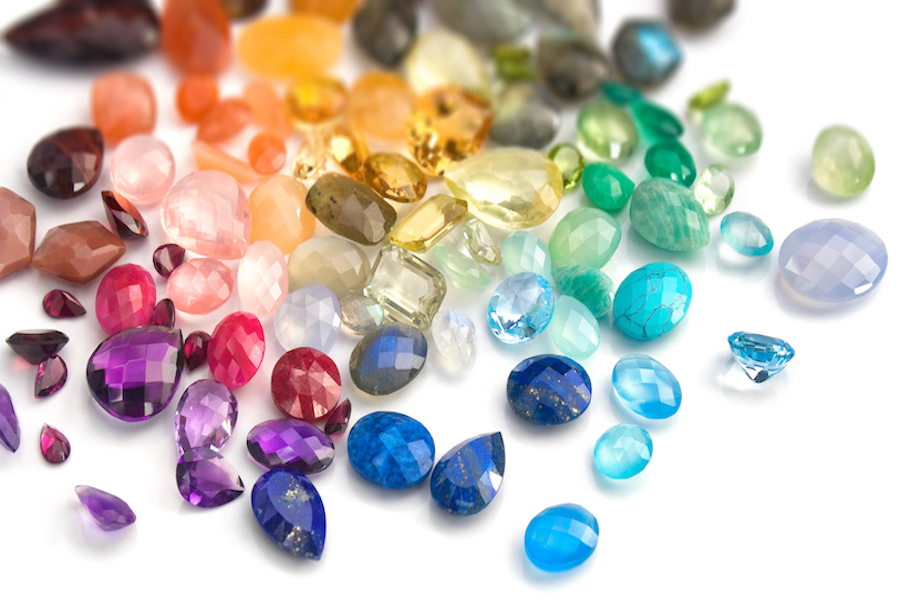Determining The Authenticity Of a Ruby: Unveiling The True Gem
Rubies, known as the “King of Gemstones,” have captivated humans for centuries with their mesmerizing red beauty. However, as with any precious gemstone, the market is flooded with imitations and synthetic alternatives. To ensure you have a buy real ruby in your possession, it is crucial to understand the key factors that determine its authenticity. In this article, we will explore various tests and observations that can assist in determining if your ruby is genuine or not.
I. Understanding The Characteristics Of Rubies
Before delving into the assessment methods, it is important to familiarize ourselves with the distinctive features of a genuine ruby:
Color:
Rubies are renowned for their intense red color. The finest rubies display a vibrant, rich hue, often referred to as “pigeon’s blood” red. However, keep in mind that rubies can also occur in shades of pink, purple, and even orange. It is crucial to assess the color carefully under good lighting conditions.
Clarity:
Natural rubies typically possess internal flaws known as inclusions. These inclusions can range from tiny needle-like structures to larger fractures and mineral crystals. These imperfections are a result of the ruby’s formation process and can help distinguish it from synthetic alternatives. visit: Buy Gemstones Online
Hardness:
Rubies are one of the hardest gemstones, second only to diamonds on the Mohs scale. With a hardness rating of 9, they exhibit excellent durability and resistance to scratching. This exceptional hardness is a key characteristic to consider when determining the authenticity of a ruby.
Density:
Genuine rubies have a higher density compared to most other gemstones. This means that a ruby of the same size will weigh more than a similar-sized imitation or synthetic ruby. Determining the density of a ruby requires measuring its weight and volume.
Refractive Index:
The refractive index (RI) of a gemstone refers to how light behaves when passing through it. Rubies typically have an RI ranging from 1.76 to 1.78. By measuring the refractive index, we can gain valuable insights into the gem’s identity.
II. Conducting Tests To Determine Authenticity
Now that we have a solid understanding of the unique properties of rubies, let’s explore some tests that can help us ascertain their authenticity:
1. Visual Inspection:
Examine The Color:
A genuine ruby should exhibit a vivid red color. Be cautious if the stone appears too pink, purplish, or orange, as it may indicate a different gemstone.
Assess clarity
Natural rubies often contain inclusions. Use a jeweler’s loupe or magnifying glass to scrutinize the gemstone for any visible imperfections. Synthetic rubies, on the other hand, tend to be more flawless.
2. Hardness Test:
Perform a Scratch Test:
Rubies possess a hardness of 9 on the Mohs scale. Try scratching the stone against a known hard substance like corundum (Mohs scale 9) or a diamond. If the ruby can scratch the material or leave a mark, it suggests it could be a genuine ruby. However, exercise caution when conducting this test, as it may damage the gemstone.
3. Density Measurement
Weigh The Ruby
Use a jeweler’s scale to determine the stone’s weight in carats.
Measure The Volume
Fill a graduated cylinder with water and note the initial volume. Gently lower the ruby into the water and measure the new volume. Subtract the initial volume from the final volume to obtain the gemstone’s volume.
Calculate density
Divide the weight of the ruby by its volume. Compare the calculated density to the expected density of a genuine ruby, which is around 4.00 g/cm³.
4. Refractive Index Assessment
Utilize a Refractometer:
This tool measures the refractive index of gemstones. Consult a professional or a gemological laboratory for an accurate assessment. Natural rubies have an RI between 1.76 and 1.78. A significant deviation from this range may indicate a different gemstone.
5. Heat Conductivity Test
Rubies have high heat conductivity. Hold the stone briefly and then touch it to your lips. If it feels significantly cooler than your skin, it suggests it could be a genuine ruby. However, exercise caution while conducting this test, as it may not provide definitive results and could potentially harm the gemstone.
III. Seeking Expert Opinion
While the aforementioned tests and observations can provide initial indications, it is crucial to consult a professional gemologist or a reputable jeweler for a comprehensive evaluation. These experts possess the necessary knowledge, experience, and specialized equipment to accurately determine the authenticity of a ruby. They can conduct advanced tests like spectroscopy, fluorescence analysis, and microscopic examinations, providing a definitive verdict.
Conclusion
Determining the authenticity of a ruby requires a careful examination of its color, clarity, hardness, density, refractive index, and heat conductivity. By combining a visual inspection with scientific tests and seeking expert opinion (free gemstone recommendation ), you can increase your chances of accurately identifying a genuine ruby. Remember, investing in a reputable source and seeking professional guidance is vital when purchasing or assessing precious gemstones. Let the radiant beauty of a true ruby grace your collection and evoke a sense of awe for generations to come.
Summary
Rubies, known as the "King of Gemstones," have captivated humans for centuries with their mesmerizing red beauty.
Source
https://thenextlaevel.com/ruby-unveiling-the-true-gem/


Leave a Reply
You must be logged in to post a comment.